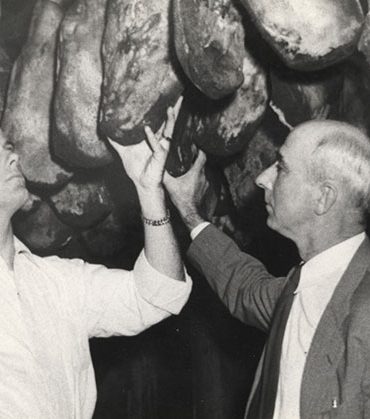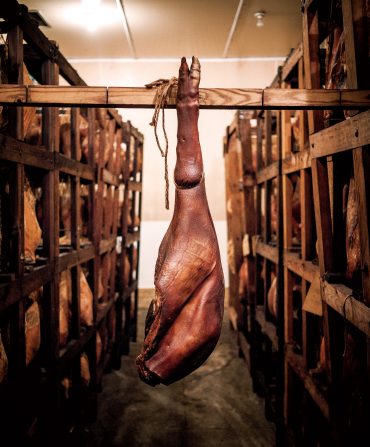“Traditionally, you’d slaughter your pigs in cold weather, so the meat wouldn’t spoil,” says Sam Edwards III of Edwards Virginia Smokehouse, in Surry. First you’d eat the most perishable parts, then you’d tackle the twenty-to-twenty-five-pound haunches destined for the glory that is dry-cured country ham. Some traditionalists still cure hams on the seasonal cycle in barnlike ham houses, while many others simulate it with climate-controlled rooms. Either way, the
fundamentals remain the same.
1. Winter
The journey from haunch to ham begins with a salt-based cure. Some recipes call for brown sugar, red pepper, or black pepper to balance the salt. Many producers supplement it with sodium nitrate, a preservative. Coated with a cure, “green” hams—named for their youth, not their color—rest in cotton bags or stacked on shelves or in boxes for one to two months at around 40ºF.
2. Spring
Warmer temperatures help the cure spread evenly throughout the meat—a process that can take up to a month. “We wash the salt off the hams, hang them on racks, and crank the temperature up to about fifty degrees,” says Edwards, who follows the climate-controlled model.
3. Smoke
Virginians are more inclined than North Carolinians to smoke hams to add flavor. Kentucky is split down the middle. “We put old iron kettles right in the aging house, and build a cool, slow smoke,” says Nancy Newsom Mahaffey of Col. Bill Newsom’s Aged Kentucky Country Ham, in Princeton. “When the hams reach a certain mahogany color, we’re done.”
4. Summer
At 85 and 90ºF, country hams sweat out the moisture that the cure hasn’t already siphoned away. “It’s like reducing a sauce to get more flavor,” says Bob Woods of the Hamery, in Murfreesboro, Tennessee. Traditional country hams go
from pig to plate in ten to twelve months. Drier, prosciutto-style hams, such as Woods’s Tennshootoe, can age for two years or more.








